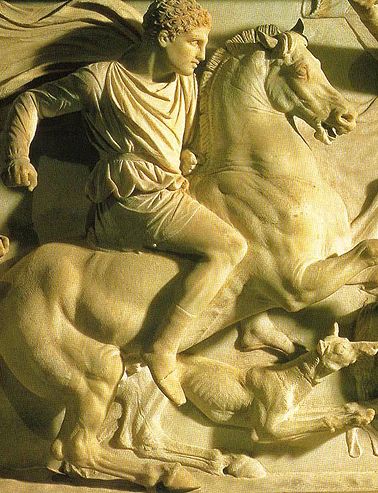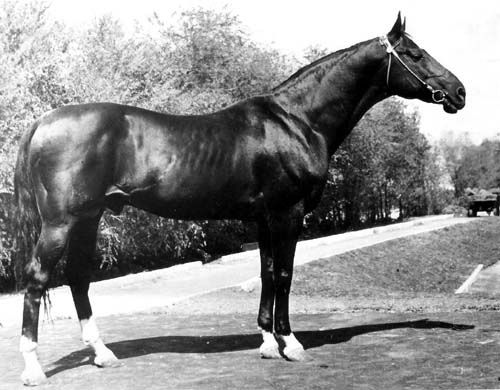|
#101806 Posted on 2017-04-19 23:49:09
I compiled this little overview about Akhal Tekes to share with some of my horse friends online. Information from "A Heavenly Horse" documentary.
I work with Akhal Tekes in real life and am encouraged by how popular they are on Equiverse, but I fear most player (and RL people) don't know much about them. So I hope this will shed some light on their history.
-------------------------------------------------------------------------
If you have ANY questions about Akhal Tekes, ask away!! :D
I am happy to share all I know from personal experience with them.
-------------------------------------------------------------------------

First off, I recently learned that...
Bucephalus, Alexander the Great's famous horse, was descended from AKHAL-TEKEs! How cool is that?!
The more I learn about Akhal-Tekes, the more I am mind-blown and saddened by how these horses went from the most coveted to the most unknown breed in the world.
The Akhal-Teke breed was developed 1500-2000 years BEFORE the Arabian (popularly but incorrectly known as the oldest breed) and is named after the Akhal Oasis and the Teke tribe in Turkmenistan where they originated. They were bred to survive on subsistence food and able to travel long distances, and quickly became THE horse for treks and battle. It's no surprise then why Alexander the Great would choose a Teke descendant as his partner in conquering much of the known world. They have an unmatched loyalty with one person, whom they will give their all to, and it explains why Bucephalus famously would allow no other than Alexander to ride him. And it is believed that the distinct metallic sheen of their coat would help them remain concealed in the desert like a mirage.

Tekes are seen in frescos of Egypt (then called the anzju-kura) and took part in the 2nd millenium BC wars with the Persian king. Shortly after, ancient writers started referring to these horses from Central Asia as "Nisean", the best horses in the world. Well bred Tekes were worth their weight in gold during this time and Roman Emperor Prop had a horse that could run 150 kilometers a day, for 8-10 days. They were the favorite horses of Persian shahs and sultans. Chinese emperors fought over them, sending war expeditions to retrieve good stock, and Emperor Wudi was able to get 10-20 Tekes as a result.
Akhal-Tekes became well known for how they would only enhance other breeds crossed with, and so today nearly all breeds carry some Teke blood. Thoroughbreds and Arabians are well known descendants of Tekes, and highlight many of Tekes' best qualities. There is a legend that one Teke stallion was so fast that he outran all competitors, so the locals challenged him to race against a falcon. The Teke won, founding the tradition to name racing Tekes after birds. It's no wonder then that some of the oldest Thoroughbred foundation horses carried the name "Turk", such as "Darcy's Yellow Turk", no doubt a Teke.
Fast forward to WWI and WWII, the Tekes, or Russian-called Argamaks, were the focus of the Turkmen mounted division (1911). Tsar Nikolai II recognized their efforts along the German front and in 1916 ordered the division be renamed "The Teke Cavalry". In 1935, a 4,300 kilometer race from Ashgabat to Moscow was held in which Soviet nationality became intertwined with Akhal-Teke horses, and proved the breed's strength to join European cavalries. After the race, the best horses were ordered to be given to Kliment Voroshilov to support Soviet war efforts. One of these horses ridden in the victory parade was a Teke named Arab (back before Arab referred exclusively to Arabian horses), and his son, Absent, became the first non-German blooded horse to win an Olympic medal.

It is tragic that, in the middle of the 20th century, the horses lost their economical value with the influx of machinery, and many started to claim they'd outlive their time. Most Tekes were sent to slaughter for the local region party to fulfill their meat quota. And that was the death bell for not only their numbers, but their recognition as one of the most influential breeds.
Fortunately, some would not let them vanish. Starting from only about 3,000 Akhal-Tekes worldwide, many Russian stud farms popped up to preserve the breed. Without them, these magnificent and distinctive horses would now only exist as history.
But now, if you see a horse in an old painting or described in an old book that has a metallic sheen, naturally thin or short mane, and noted for its loyalty or endurance... remember that an Akhal Teke is probably in their blood.
5 members like this post.
|
Posted By

Revv
#110269
Member is Offline
52 forum posts
Send A Message
|







